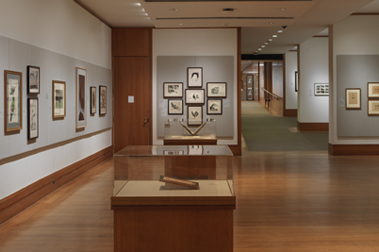Indian temple
George Chinnery British
Not on view
In the early nineteenth century, the British East India Company’s growing presence in India encouraged London-trained artists to travel to the subcontinent. Chinnery left England in 1802 to seek portrait commissions in Madras, Calcutta, and Dacca (present-day Dhaka, Bangladesh). This lively sketch of a small Indian temple, falling into ruin and buffeted by a passing squall, likely dates to his residence in Dacca between 1808 and 1812. In that period the artist stayed with the British East India representative Sir Charles D’Oyly; this work was once housed in an album assembled by a collector who knew both D’Oyly and Chinnery.
This image cannot be enlarged, viewed at full screen, or downloaded.


